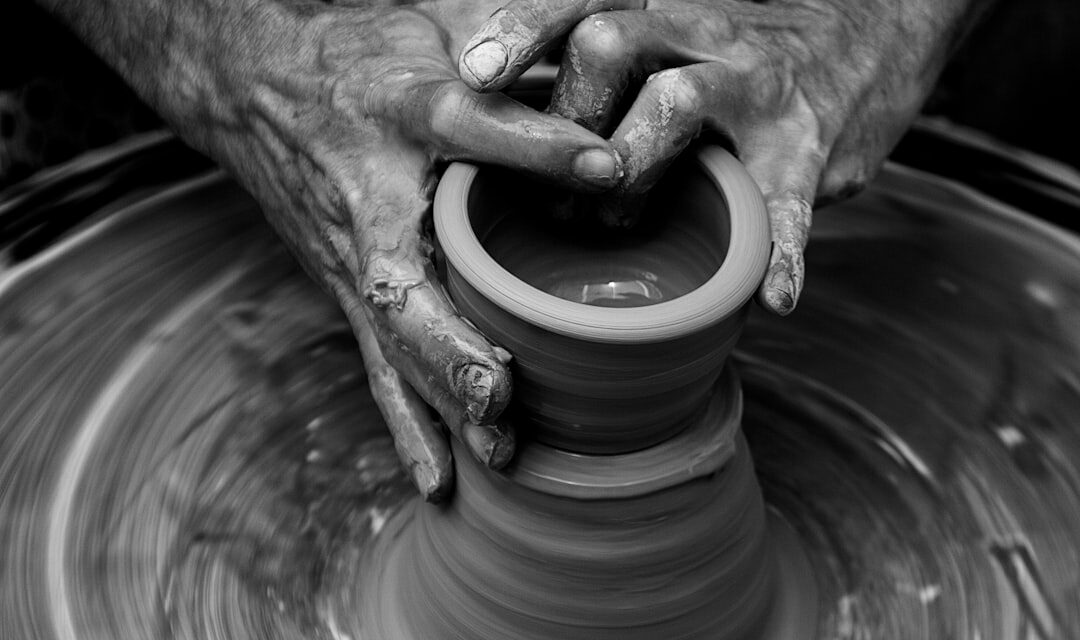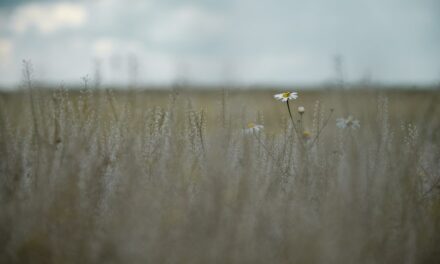Paulus Potter was born in 1625 in Enkhuizen, a town in the northern part of the Netherlands. His family was steeped in artistic tradition; his father, Pieter Potter, was a painter and his mother, Maria, was the daughter of a well-known artist. This familial environment undoubtedly played a significant role in shaping young Paulus’s artistic inclinations.
By the age of twelve, he had already begun to demonstrate a remarkable talent for drawing, which led him to pursue formal training in the arts. He moved to Amsterdam, where he likely studied under the tutelage of established artists of the time, immersing himself in the vibrant art scene that characterised the Dutch Golden Age. Potter’s education was not merely confined to formal instruction; he was also influenced by the rich tapestry of artistic styles and techniques prevalent in Amsterdam.
The city was a melting pot of creativity, where artists exchanged ideas and techniques. It is believed that Potter was particularly inspired by the works of other prominent painters, such as Rembrandt and Frans Snyders, who were known for their dynamic compositions and vivid depictions of nature. This early exposure to diverse artistic influences would later inform his unique style and thematic choices.
Summary
- Paulus Potter was born in Enkhuizen, Netherlands in 1625 and showed an early talent for art, receiving training from his father, a painter.
- Influenced by the work of Dutch landscape painters and the Italianate style, Potter’s early works focused on rural landscapes and animals, reflecting his love for nature.
- Potter’s meticulous attention to detail and use of light and shadow set him apart, and his innovative techniques, such as using a camera obscura, influenced future artists.
- His most famous work, “The Young Bull,” is a masterpiece that showcases his ability to capture the essence of animals and their natural surroundings.
- Potter’s rise to fame was cut short by his untimely death at the age of 28, but his impact on Dutch Golden Age art was significant, inspiring future generations of artists.
Influences and Inspirations
The influences on Paulus Potter’s work are manifold, reflecting both his personal experiences and the broader cultural context of 17th-century Holland. One of the most significant inspirations for Potter was the natural world itself. His fascination with animals and landscapes is evident in many of his paintings, where he captures the essence of rural life with remarkable precision.
The pastoral scenes he created were not merely representations of nature; they were imbued with a sense of harmony and balance that resonated deeply with contemporary viewers. In addition to nature, Potter drew inspiration from the works of his predecessors and contemporaries. The influence of Dutch still-life painting is particularly notable in his attention to detail and texture.
Artists like Snyders, who specialised in animal subjects, provided a template for Potter’s own explorations of similar themes. Furthermore, the burgeoning interest in realism during this period encouraged Potter to adopt a more observational approach to his subjects, allowing him to depict animals with an unprecedented level of accuracy and emotional depth.
Style and Techniques
Paulus Potter’s artistic style is characterised by its meticulous attention to detail and a profound understanding of light and shadow. His technique involved layering paint to create depth and texture, which brought his subjects to life on canvas. Potter often employed a rich colour palette that enhanced the vibrancy of his landscapes and animal subjects.
His ability to capture the play of light across fur and foliage is particularly noteworthy, as it adds a sense of realism that draws viewers into his world. One of the defining features of Potter’s work is his innovative composition.
This approach not only showcased his technical prowess but also reflected a philosophical engagement with nature, suggesting a harmonious relationship between humanity and the animal kingdom. His use of perspective further enhanced this effect, inviting viewers to step into the pastoral scenes he so lovingly rendered.
Notable Works
Among Paulus Potter’s most celebrated works is “The Young Bull,” painted in 1647. This masterpiece exemplifies his ability to blend realism with emotional resonance. The painting features a young bull standing majestically in a lush landscape, its powerful form rendered with exquisite detail.
The play of light across its coat and the surrounding foliage creates a sense of vitality that captivates the viewer. “The Young Bull” is often regarded as one of the finest examples of animal painting from the Dutch Golden Age, showcasing Potter’s mastery of both subject matter and technique. Another significant work is “The Horseman,” which depicts a rider on horseback amidst a serene rural backdrop.
This painting not only highlights Potter’s skill in portraying animals but also reflects his understanding of human-animal relationships. The dynamic pose of the horse and rider conveys a sense of movement and energy, while the tranquil landscape serves as a counterpoint to their action.
Rise to Fame
Paulus Potter’s rise to fame can be attributed to several factors that converged during his career. His early works garnered attention for their innovative approach to animal painting, setting him apart from his contemporaries. As he honed his skills and developed his unique style, he began to attract patrons who recognised his talent and sought to commission works from him.
This growing demand for his art allowed him to establish himself as one of the leading painters of his time. The burgeoning art market in Amsterdam also played a crucial role in Potter’s ascent. The city was experiencing an economic boom during the Dutch Golden Age, leading to an increased appetite for art among wealthy collectors and merchants.
Potter’s ability to capture the beauty of rural life resonated with this audience, further solidifying his reputation as an artist capable of elevating everyday subjects into extraordinary works of art. By the time of his untimely death at the age of 28, he had already achieved significant recognition, leaving behind a legacy that would influence generations to come.
Impact on Dutch Golden Age Art
The Rise of Animal Subjects
Prior to Potter, animal subjects were often relegated to secondary roles within larger compositions; however, he elevated them to central figures, allowing for deeper exploration of their character and significance within the natural world.
A Celebration of Rural Life
Moreover, Potter’s emphasis on capturing the essence of rural life resonated with contemporary audiences who were increasingly interested in themes of nature and pastoral beauty. His works reflect a growing appreciation for the Dutch landscape and its inhabitants, contributing to a broader cultural movement that celebrated the simplicity and richness of everyday life.
A Lasting Legacy
In this way, Potter’s art not only enriched the visual language of his time but also helped shape the trajectory of Dutch art as it moved towards greater realism and emotional depth.
Legacy and Influence on Future Artists
The legacy of Paulus Potter extends well beyond his own lifetime, influencing countless artists who followed in his footsteps. His pioneering techniques in animal painting laid the groundwork for future generations to explore similar themes with renewed vigour. Artists such as Jean-Baptiste Oudry and Rosa Bonheur drew inspiration from Potter’s meticulous attention to detail and ability to convey emotion through animal subjects.
Furthermore, Potter’s integration of animals within expansive landscapes has had a lasting impact on landscape painting as a whole. His ability to create harmonious compositions that celebrate both nature and its inhabitants has inspired artists across various movements, from Romanticism to Impressionism. The reverence for nature that permeates Potter’s work continues to resonate with contemporary artists who seek to capture the beauty and complexity of the natural world.
Personal Life and Relationships
Despite his relatively short life, Paulus Potter’s personal experiences shaped both his art and legacy. He was known to have been deeply connected to his family, particularly his father, who provided him with early artistic guidance. This familial bond likely instilled in him a sense of purpose and dedication to his craft.
However, little is documented about his personal relationships beyond this familial context, which adds an air of mystery to his life. Potter’s marriage in 1654 to Anna van der Veen marked another significant chapter in his life. While details about their relationship remain scarce, it is believed that Anna supported him during his artistic endeavours.
Their partnership may have provided him with emotional stability during a time when he was navigating the complexities of fame and artistic expression.
Critical Reception and Controversies
During his lifetime, Paulus Potter received considerable acclaim for his work; however, he was not without controversy. Some critics argued that his focus on animal subjects detracted from more traditional themes prevalent in Dutch painting at the time. This debate highlighted a tension within the art community regarding what constituted “serious” art versus more accessible representations of nature.
Despite these criticisms, Potter’s innovative approach ultimately won over many admirers who recognised the emotional depth and technical skill present in his paintings. His ability to evoke empathy for animals through careful observation challenged prevailing notions about subject matter in art, paving the way for future artists to explore similar themes without fear of judgement.
Preservation and Restoration of Potter’s Artworks
The preservation and restoration of Paulus Potter’s artworks have become essential endeavours for art historians and conservators alike. Many of his paintings have endured the test of time remarkably well; however, some have suffered from deterioration due to environmental factors or previous restoration attempts that were not executed with care. As such, ongoing efforts are being made to ensure that these masterpieces remain accessible for future generations.
Restoration projects often involve meticulous examination using advanced technologies such as infrared reflectography and X-ray imaging. These methods allow conservators to gain insights into Potter’s working methods while also identifying areas requiring intervention. The goal is not only to restore the physical integrity of the paintings but also to preserve their historical significance within the context of Dutch Golden Age art.
Commemorations and Tributes to Paulus Potter
Paulus Potter’s enduring legacy has been commemorated through various tributes over the years. Museums across Europe proudly display his works as part of their collections, ensuring that new generations can appreciate his contributions to art history. Exhibitions dedicated solely to his oeuvre have been organised, allowing scholars and enthusiasts alike to delve deeper into his artistic journey.
In addition to institutional recognition, Potter has been celebrated through literature and scholarship that explores his life and impact on art. Biographies detailing his achievements have emerged alongside critical analyses that examine specific aspects of his work. These efforts serve not only as tributes but also as vital resources for understanding the significance of Paulus Potter within the broader narrative of art history.
In conclusion, Paulus Potter remains an iconic figure within Dutch Golden Age art whose influence continues to resonate today. His innovative techniques, emotional depth, and dedication to capturing the beauty of nature have left an indelible mark on both contemporary artists and art historians alike. Through ongoing preservation efforts and scholarly exploration, we ensure that this remarkable artist’s legacy endures for generations yet unborn.
If you are interested in exploring different artistic techniques to improve your skills, you may want to check out this article on sketchbook exercises for daily pencil drawing projects. This resource provides valuable tips and ideas for incorporating regular drawing practice into your routine, which can help you develop your artistic abilities and creativity. By honing your skills through consistent practice, you can enhance your artistic vision and create more compelling artwork.




